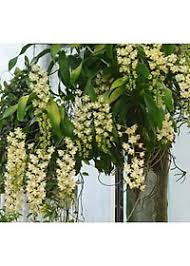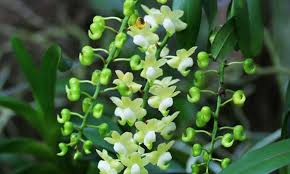
Dendrobium orchids, particularly the Đai Châu variety, have a rich history and cultural significance in Vietnam. This article explores the historical journey of these beautiful flowers, their role in Vietnamese culture, traditional cultivation practices, and their current status in society.
## 1. Introduction to Dendrobium Orchids (Đai Châu)
### 1.1 Overview of Dendrobium Orchids
Dendrobium is one of the largest genera of orchids, with over 1,800 species, many of which are found in Southeast Asia. The Đai Châu variety is particularly valued in Vietnam for its stunning flowers, rich colors, and pleasant fragrance. Known for their resilience and adaptability, these orchids thrive in various environmental conditions, making them a popular choice for both amateur and professional growers.
### 1.2 Importance in Vietnamese Culture
In Vietnam, the Đai Châu orchid symbolizes beauty, grace, and purity. It is often associated with traditional values and is frequently used in celebrations, festivals, and as gifts during significant events. The cultivation of Dendrobium orchids has become a cultural practice, representing the harmony between nature and human creativity.
## 2. Historical Background of Dendrobium Cultivation in Vietnam
### 2.1 Origins of Orchid Cultivation
The history of orchid cultivation in Vietnam can be traced back centuries. Orchids were initially found in the wild, growing naturally in the country’s lush tropical forests. Ancient Vietnamese people recognized the beauty and uniqueness of these flowers and began to cultivate them for ornamental purposes.
### 2.2 Traditional Practices
Historically, the Vietnamese people developed specific cultivation techniques to grow Dendrobium orchids effectively. These practices included:
– **Selection of Varieties**: Early cultivators focused on selecting the best-performing orchids with vibrant colors and strong growth habits. Dendrobium varieties with unique features were highly prized and often passed down through generations.
– **Use of Natural Resources**: Traditional growers relied on natural resources such as bamboo, coconut husks, and tree bark as growing mediums. These materials provided the necessary support and drainage for the orchids while maintaining moisture levels.
– **Local Knowledge**: The cultivation of Dendrobium orchids was often rooted in local knowledge and traditions. Farmers would observe the natural growth patterns of orchids in the wild and adapt their cultivation techniques accordingly.
### 2.3 Spread of Orchid Cultivation
Over the years, the popularity of Dendrobium orchids spread across Vietnam, becoming an essential part of the country’s horticultural landscape. Regions such as Hanoi, Da Nang, and Ho Chi Minh City emerged as significant centers for orchid cultivation, with many growers participating in local competitions to showcase their best specimens.
## 3. Cultural Significance of Đai Châu Orchids
### 3.1 Symbolism and Meaning
In Vietnamese culture, orchids are often associated with various meanings:
– **Beauty and Elegance**: The delicate beauty of Dendrobium orchids reflects grace and elegance, making them a popular choice for decorative arrangements and gifts.
– **Good Fortune**: Orchids are often believed to bring good luck and prosperity. They are frequently used in traditional ceremonies and events, symbolizing blessings for the family.
– **Respect and Affection**: Gifting Dendrobium orchids is a way to express respect and affection. They are commonly given during Tet (Lunar New Year), weddings, and other important occasions.
### 3.2 Role in Festivals and Celebrations
Dendrobium orchids play a vital role in various Vietnamese festivals and celebrations. Some notable examples include:
– **Tet Festival**: During the Lunar New Year, it is customary for families to decorate their homes with flowers, including Đai Châu orchids, to symbolize renewal and good fortune.
– **Weddings**: Orchids are often used in wedding decorations and bouquets, representing love and beauty. The presence of orchids adds an elegant touch to the celebration.
– **Cultural Events**: In cultural festivals, such as the Vietnam Orchid Festival, Dendrobium orchids are showcased for their beauty, and competitions are held to recognize the best specimens.
### 3.3 Influence on Art and Literature
Dendrobium orchids have also influenced Vietnamese art and literature. They are frequently depicted in paintings, poetry, and traditional music. The beauty of these flowers inspires artists to capture their essence and significance, further embedding them into Vietnamese cultural heritage.
## 4. Modern Cultivation Practices
### 4.1 Advances in Orchid Cultivation
With the advancement of technology and horticultural knowledge, modern cultivation practices for Đai Châu orchids have evolved significantly. Some key developments include:
– **Hybridization**: The introduction of hybrid Dendrobium varieties has expanded the range of colors and flower forms available to growers. Hybridization has resulted in orchids with improved resilience and adaptability to various growing conditions.
– **Scientific Research**: Research on orchid biology and cultivation techniques has provided growers with valuable insights. This knowledge has led to the development of best practices for propagation, pest management, and disease prevention.
– **Commercialization**: The commercialization of Dendrobium orchids has transformed them into a lucrative industry. Many growers have transitioned from traditional methods to more sophisticated production systems, including greenhouse cultivation.
### 4.2 Sustainable Practices
In recent years, there has been a growing emphasis on sustainable cultivation practices among orchid growers. These practices focus on minimizing environmental impact and promoting biodiversity. Some notable approaches include:
– **Organic Growing Methods**: Many growers are adopting organic methods to cultivate Dendrobium orchids, reducing the use of chemical fertilizers and pesticides. This approach promotes healthier plants and minimizes environmental harm.
– **Conservation Efforts**: Awareness of the ecological impact of orchid cultivation has led to initiatives aimed at conserving native orchid species. Some growers actively participate in conservation programs to protect threatened species and their habitats.
## 5. Challenges in Dendrobium Cultivation
### 5.1 Environmental Factors
Dendrobium orchids are sensitive to environmental changes, and various factors can impact their growth:
– **Climate Variability**: Fluctuations in temperature, humidity, and light can affect the health of orchids. Extreme weather conditions, such as droughts or heavy rainfall, pose challenges for growers.
– **Pests and Diseases**: Orchids are susceptible to pests and diseases, which can threaten their growth and longevity. Effective pest management strategies are essential to prevent infestations and maintain healthy plants.
### 5.2 Market Demand
The increasing popularity of Dendrobium orchids has created a competitive market. Growers face challenges in meeting the demand for high-quality orchids while maintaining sustainable practices.
### 5.3 Preservation of Traditional Practices
As modern cultivation techniques become more prevalent, there is a risk of losing traditional knowledge and practices associated with Dendrobium cultivation. Preserving these traditions is crucial for maintaining the cultural heritage of orchid growing in Vietnam.
## 6. Future of Dendrobium Orchids in Vietnam
### 6.1 Innovations in Cultivation
The future of Dendrobium orchid cultivation in Vietnam is likely to see continued innovations. Advances in technology, breeding techniques, and research will contribute to the development of more resilient and diverse varieties.
### 6.2 Education and Training
Increasing awareness of sustainable practices and the importance of preserving traditional knowledge will be essential for the future of orchid cultivation. Educational programs and training workshops can help equip growers with the skills needed to thrive in a changing environment.
### 6.3 Global Recognition
As Vietnam continues to showcase its unique Dendrobium orchids on the international stage, there is potential for global recognition of Vietnamese orchid cultivation. Participation in international orchid shows and competitions can elevate the status of Vietnamese orchids and foster collaboration among growers worldwide.
## 7. Conclusion
The history and cultural significance of Dendrobium orchids, particularly the Đai Châu variety, in Vietnam is a testament to the enduring relationship between nature and humanity. From their origins in the wild to their role in Vietnamese traditions and modern cultivation practices, these beautiful flowers embody the beauty, grace, and resilience of Vietnamese culture. As growers continue to navigate the challenges and opportunities of orchid cultivation, the legacy of Dendrobium orchids will undoubtedly flourish, enriching the cultural landscape of Vietnam for generations to come.


